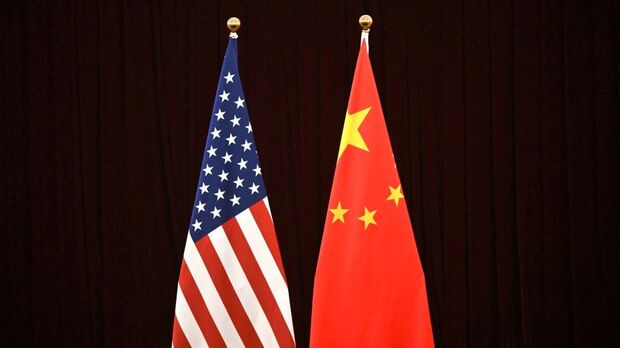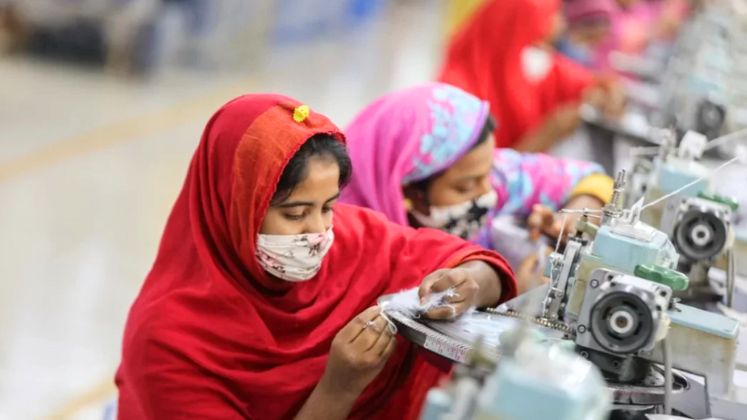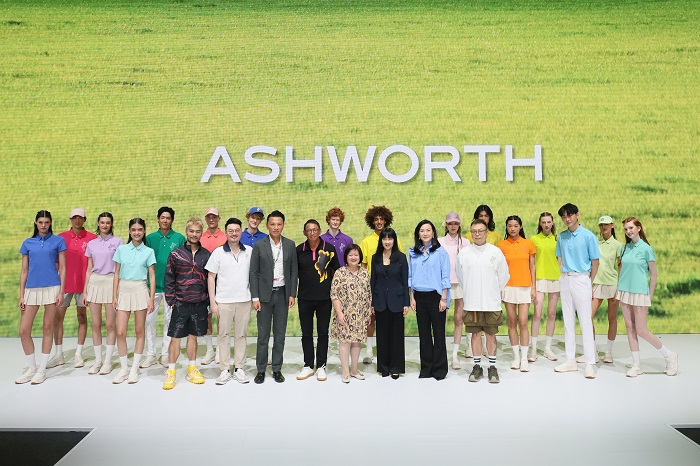FW
Tengri, a new high-end fashion label using yak's wool, has released its first range of ethical woolens. The name Tengri means pantheon of gods in Mongolian. The brand aims to shake the dominance of cashmere clothing with its alternative soft fabric. Founded by Nancy Johnson, a former charity worker, in March this year, Tengri seeks to highlight the plight of Mongolian yak herders, many of whom can no longer make a living from their traditional, nomadic lifestyle.
Mongolian wool is spun from fleece-bearing animals that live in the geography loosely called Mongolia. Mostly, the fleece is grown on sheep. Johnson is hoping to transform the lives of 1,000 Mongolian families that are currently supplying their yak wool to her social start-up.
Mongolia is the largest exporter of cashmere in the world. Mongolian nomads used to earn most of their income raising goats which produce the soft fibers that are used to make the high-end cashmere sweaters, scarves and coats. Yet they were forced to sell or slaughter their goats because the demand for luxury goods plummeted during the financial crisis.
The price of cashmere dropped drastically, leading to overgrazing and over herding of the goats to meet demand. Shearing is also impossible as there is almost no electricity on the steppe.
RWTH Aachen University is one of the leading technology oriented universities in Germany. Energy efficiency and environment are strategic key topics at RWTH Aachen University. The Institut für Textiltechnik (ITA) is the textile division of Aachen. It recently completed 80 years. Research at the ITA covers the complete textile production chain. Four divisions research production technology, develop new materials and discover innovative concepts for technological products. The ITA has about 170 machines at its disposal, ranging from small sewing machines to five- meter-high braiding machines.
ITA does research in fiber processing of thermoplastic polymers. This concerns the process chain from compounding, yarn production (melt spinning) to yarn post processing (drawing, texturizing) until the various techniques of textile fabric production like weaving and non woven. The institute owns several melt spinning plants and its focus is technological development of the machine technology and innovative textile fibers.
ITA has established the world’s first multi-scale system for the production of precursors and carbon fibers to enable small to medium sized enterprises an entry into the growing carbon market. By developing new material technologies, ITA establishes an important link to practical implementation. A new environmentally friendly process management allows 17 pe rcent cost savings in the production of carbon fibers. This new development will have far reaching consequences for applications in the aerospace industry.
www.ita.rwth-aachen.de/
Cotton and textile industry play a significant role in Zimbabweans economic growth and development. The International Trade Centre (ITC) a joint agency of the World Trade Organisation (WTO) and United Nations (UN) has announced that Zimbabwe would be launching the Cotton-to-Clothing (C2C) Export Strategy at an indaba in Bulawayo next week.
The strategy is funded by the European Union (EU) under the EU-Africa partnership on cotton. The indaba will be held on September 26. The said strategy aims to revive the country’s cotton and textile industry since more than one million Zimbabweans, including farmers, ginners, and textile producers as well as their families depend on cotton for their day to day livelihoods, said ITC, which developed the strategy together with the ministry of industry and commerce.
The joint strategy is meant to promote the industry in eastern and southern Africa and intends to increase cotton lint production to 450, 000 tons per year. It also aims to increase exports of textiles and garments to $7.5 million by 2019. Mike Bimha, Zimbabwe’s Industry and Commerce minister, Dorothy Tembo, ITC’s deputy executive director and Sindiso Ngwenya, secretary-general of COMESA, will oversee the launch of the strategy at the Bulawayo Clothing Indaba.
www.intracen.com
Leading international fashion brands such as H & M have indicated that they are willing to pay higher rates for garments made in Cambodia if the government decides to increase minimum wages for garment workers. Eight retailers gave assurance in a letter to Deputy Prime Minister Keat Chhon and to the Chairman of the Garment Manufacturers Association in Cambodia (GMAC), which represents garment factory owners in the country.
Meanwhile agitated Cambodian garment factory workers launched a new campaign this week seeking an increase of their monthly minimum wage to $177 from $100 effective 2015. Hundreds of workers carried out demonstrations in their factories during lunch break to highlight their demand ahead of a meeting of the Labor Advisory Committee (LAC), an organization of employers, the government, and unions, on September 26 during which officials will discuss a possible minimum wage increase in January.
A previous demand for a wage hike to $160, had been rejected by employers, who had raised salaries to $100 from $80 this year. “As responsible business, our purchasing practices will enable the payment of a fair living wage and increased wages will be reflected in our FOB prices, taking also into account productivity and efficiency gains and the development of the skills of workers, carried out in cooperation with unions at workplace level," H &M and other retailers Inditex, C & A, N Brown, Tchibo, Next Retail, Primark and New Look said in the letter.
The retailers also said that they expect the government and GMAC to establish processes "to ensure all workers receive the new agreed minimum wage by monitoring wage implementation and policing suppliers that fail to meet the new minimum wage level. This will ensure an equal level playing field and create a competitive advantage for the factories that comply with the new minimum wage."
www.hm.com
Cotton Council International (CCI), Cotton Incorporated (CI) and Cotton Australia (CA) will unite to promote cotton at the 2014 Shanghai Intertextile Apparel Fabrics. These organizations, collectively, will be bringing the focus to responsible cotton production and sourcing. Additionally, CI and CCI will be helping companies discover what cotton can do through production innovations, supply chain opportunities and marketing programs.
In conjunction with the exhibition, Cotton Incorporated will present a trend forecast for Spring/Summer 2016. Cotton Council International is a non-profit organization devoted to the promotion of cotton. In India, it implements a Generic Cotton Education program, which strives to increase the demand among end consumers for products made from 100 per cent cotton.
This year, CCI has renewed and reinvigorated the Cotton USA brand, which appears with quality products that exemplify the passion of US cotton farmers and an industry that spans across the country. Its clean modernity invokes the innovative American spirit and celebrates the values of purity, quality and responsibility: a living ingredient born in the USA from seed, sun and soil.
Cotton Incorporated, funded by US growers of upland cotton and importers of cotton and cotton textile products, is the research and marketing company representing upland cotton. Cotton Australia is the peak body for Australia’s cotton growing industry.
The cotton production industry in Azerbaijan is facing setbacks. Over the past 18 years, cotton production has decreased six times in the country. The acreage has fallen nine fold. Azerbaijan produced 2.7 million tons of cotton in 1995, while in 2013 the figure stood at 4,52,000 tons. This decrease is the result of a fall in cotton prices in world markets. The high use of artificial material worldwide has negatively affected the cotton growing sector.
The country is taking measures to reduce the cost of cotton production. Despite the decrease in production in Azerbaijan, Russia increased its import of cotton from Azerbaijan by almost 20 per cent in 2013.
During the Soviet regime, especially in the 1980s, the primary emphasis in agriculture was placed on cotton cultivation. Since then, production has declined. The agricultural industry lacks adequate machinery, equipment, and technology and, thus, cotton cultivation and harvesting is outdated.
Cotton still remains a strategic product for Azerbaijan. Nevertheless, the extent of cultivation has diminished considerably. The reduction of the cotton cultivation can also be blamed on internal politics. In 1992, political leaders in Azerbaijan branded cotton cultivation as slavery, and, subsequently, the mass media launched an anti-cotton campaign oblivious to the importance of cotton for the country’s economy.
Zimbabwe wants to revive its cotton and textile industry. More than a million Zimbabweans, including farmers, ginner, and textile producers and their families, depend on cotton for their livelihood.
Zimbabwean cotton is regarded one of the finest cottons in the world. However, crop hectarage is declining as farmers are shifting to other crops such as tobacco due to unviable prices. Subsidised cotton from developed countries is killing the competiveness of Zimbabwean ginners. There is a shortage of working capital. Capacity utilisation in the sector is below 10 per cent and there is cut-throat competition from cheap fabric imports. The local fabric market is now dominated by imports particularly from China, Pakistan and India.
The cotton output has declined from 4,50 000 hectares in the 2011-12 season to 2,41,849 hectares in the 2012-13 season. However, there are opportunities for the clothing industry if it focuses on niche quality markets rather than mass production commodity-like output. It has a competitive advantage locally and regionally based on delivery.
Strategies for the revival of the textile industry and value addition combined with financing from the banking sector are also expected to boost local demand for cotton and, hence, its production.
Load shedding is affecting Pakistan's textile mills. The problem is particularly serious in Punjab province, which constitutes 70 per cent of the total textile industry in Pakistan.
So severe is the energy constraint that exports to the European Union have declined to 25 per cent in the last three months compared with 40 per cent growth in exports in the first three months after the Generalised System of Preferences plus facility was extended to Pakistan in January 2014.Load shedding is expected to disrupt the supply chain of textile goods predominantly meant for exports.
Following significant reduction in hydel power generation due to unprecedented floods in the country load shedding has not only been increased for domestic consumers but also in the industrial sector where independent feeders are facing power shortages of more than 10 hours.The current electricity demand is 22,000 mw whereas the production is 14,000 mw. Thesupply situation worsened due to the massive line losses, theft and leakages.
Because of continuous load shedding the Punjab-based textile industry has been forced to curtail production, lay off workers and incur losses on commitments with foreign buyers. Market share once lost is almost impossible to regain.
Pakistan is eagerly awaiting Chinese President Xi Jinping's visit. Reason: He is to formally inaugurate several garment industry projects and joint ventures worth Rs 12 billion. Among these is an apparel park. The Chinese Ruyi group was set to install a denim mill of 100 million meters per day, a dying mill of 100 million meters per day besides launching a coal power plant of 150 mw in Faisalabad.
Pakistan’s garment industry feels if the visit doesn’t happen soon, and work doesn’t begin, orders will shift to Bangladesh, Myanmar and India. All these countries are interested in Chinese investment in their textile parks.
Another issue that’s plaguing Pakistan is energy supplies. Production activities have been badly affected and reduced to almost 60 per cent. A huge investment is needed to boost power generation.
The industry is facing prolonged delay in payment of refunds. Claims have accumulated into billion of rupees. Exporters’ money has been held up by the Ministry of Finance for the last several years and has now reached around Rs 25 billion against refund claims of duty drawback of local taxes and levies and sales tax. Due to these unreleased payments, exporters say they are facing an acute liquidity crunch.
The area of cotton cultivation in China this year is expected to decline 8.7 per cent compared with 2013 and cotton yield is also forecast to fall. The cotton growing area in the Yangtze River basin and the Yellow River basin went down by about 12.1 per cent and 14.5 per cent. Hebei and Jiangsu, two of the country’s major cotton regions, saw their growing areas decline 16.4 per cent and 20 per cent.
The relatively low profitability of cotton and the end of the government’s purchases to prop up prices are to blame for declining cotton growing area. In Jiangxi province, another important cotton growing region, some major cotton counties, such as Pengze and Duchang, have seen their cultivation areas fall by at least 10 per cent, and some major cotton growers have cut their planting areas by nearly half.
This decline is expected to continue for the next years. And this shrink will result in a big supply gap in the cotton market. However, China will remain a big consumer of cotton due to its large population, growing incomes and increasing export demand. In China, cotton is sown from April to May and harvested from September to November.












